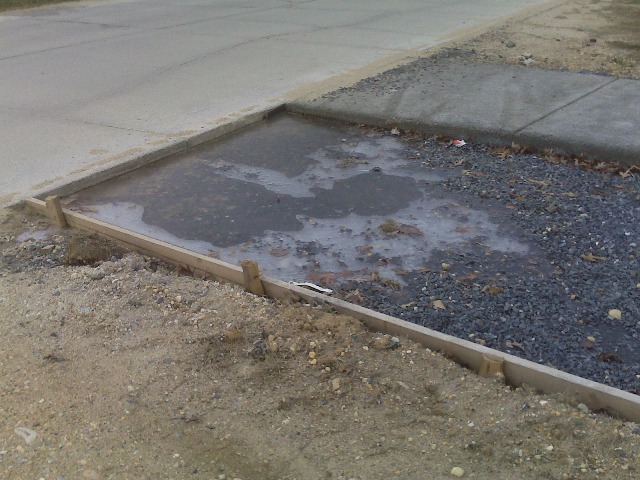Date: January 1, 2010
News - Cold Weather Concrete Placement
Special precautions should be taken when pouring concrete in cold weather, because cold weather can slow or stop concrete’s chemical process of hardening, which is called hydration.
Concrete hydrates more slowly as temperatures decrease and slows more rapidly when temperatures are below 32°F, but concrete can still gain strength when temperatures are in the teens. Because concrete gains strength slowly in cold weather, expanding ice within the curing concrete may cause small fractures that will prevent the concrete from reaching its full strength and reduce its durability. While concrete placed in cold temperatures may need longer to cure, the final strength may be higher than concrete cured at warmer temperatures.
Concrete hydrates more slowly as temperatures decrease and slows more rapidly when temperatures are below 32°F, but concrete can still gain strength when temperatures are in the teens. Because concrete gains strength slowly in cold weather, expanding ice within the curing concrete may cause small fractures that will prevent the concrete from reaching its full strength and reduce its durability. While concrete placed in cold temperatures may need longer to cure, the final strength may be higher than concrete cured at warmer temperatures.
The contractor has several options to maintain quality during cold weather placement:
- Concrete paving should never be placed on frozen subgrade. The temperature difference between concrete and subgrade should be no more than 30°F.
- The most important precaution for concreting in cold weather is to prevent concrete from freezing until it achieves the strength of 500 psi, which usually happens within the first 24 hours.
- Insulate the concrete with polystyrene foam sheets, foamed vinyl blankets, or straw while using concrete’s natural heat of hydration for warmth.
- Edges and corners should receive extra protection because they are exposed to heat loss in multiple directions.
Mixes can also be optimized for cold weather concreting:
- Concrete containing Type III or High Early cements will speed up the curing process; with Type III one day of curing is comparable to three days, and three days are comparable to seven.
- Using accelerating admixtures will help the concrete to gain strength faster.
- Using higher strength concrete will help the concrete to gain strength faster and allow for faster formwork removal.
- In cold weather, concrete slump should be lower than normal to avoid retarding setting; because the hydration process is slowed, the setting process should also be slowed.
- Using heated aggregates and/or mixing water can help to raise the temperature of the concrete.

Other news articles from January 2010
- "Extreme Makeover: Home Edition" Featuring Chaney Enterprises, Partner Customers Airs on New Date, February 14
- Chaney Foundation to Offer Scholarships
- Toy Box - Information for Contractors
- Unsung Hero
- Training - Upcoming class information
- Adding Water to Concrete on the Jobsite
- Winter Care for Concrete
- Testing Compressive Strength
- Proper Cylinder Procedures
- Avoiding Discrepancies in Yield
- How to Order Ready Mixed Concrete
- Hot Weather Concrete Placement
- Guide to Admixtures
- Curing Concrete
- Avoiding Concrete Cracks
- Concrete Pavement Analyst Software Compares Initial and Lifecycle Costs
- Kaufman Products Visits The Concrete Store
- Visit the Concrete Store for your cold weather concrete needs
- “Living Within Your Means” Sustains Us All
- Tax Planning Tips